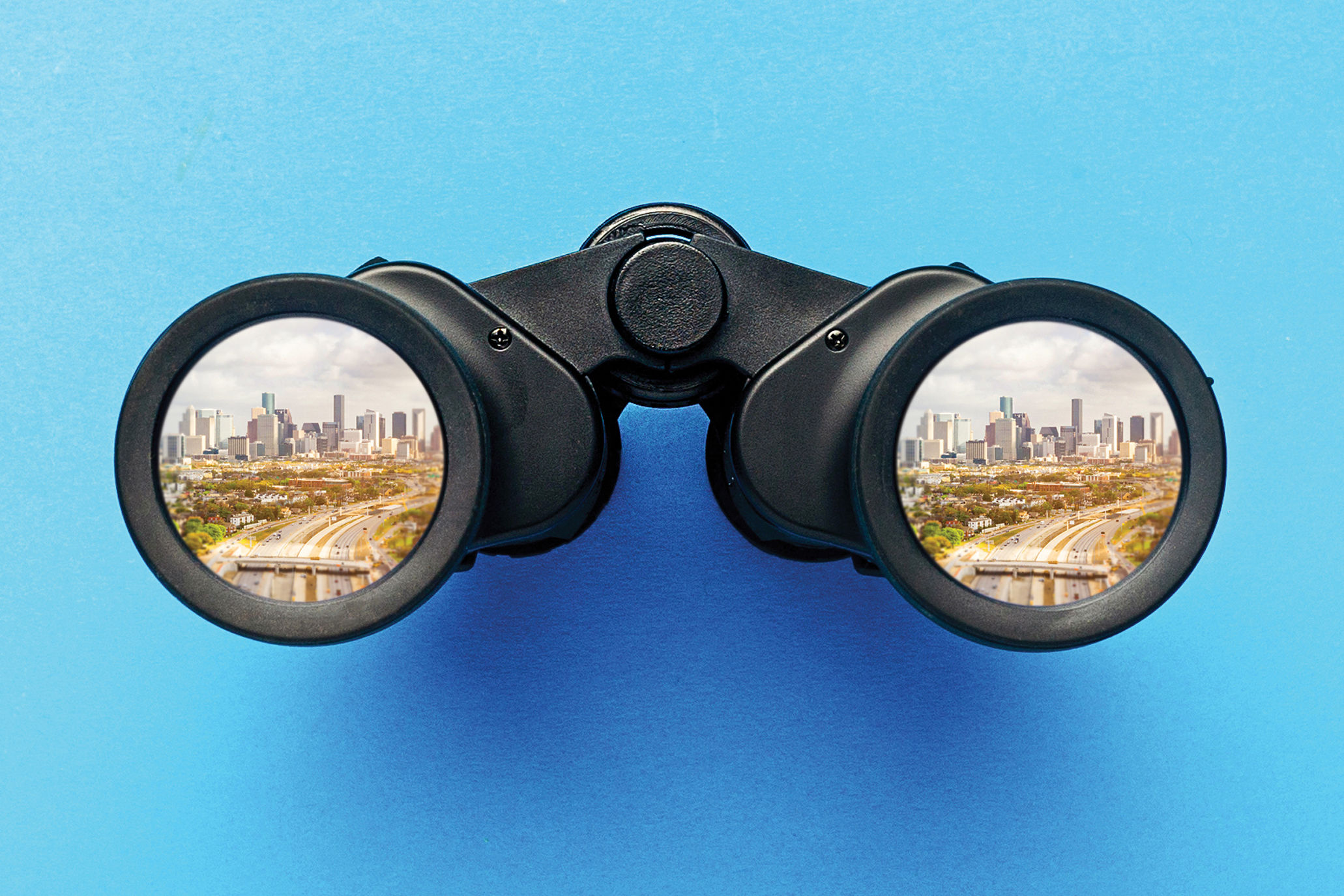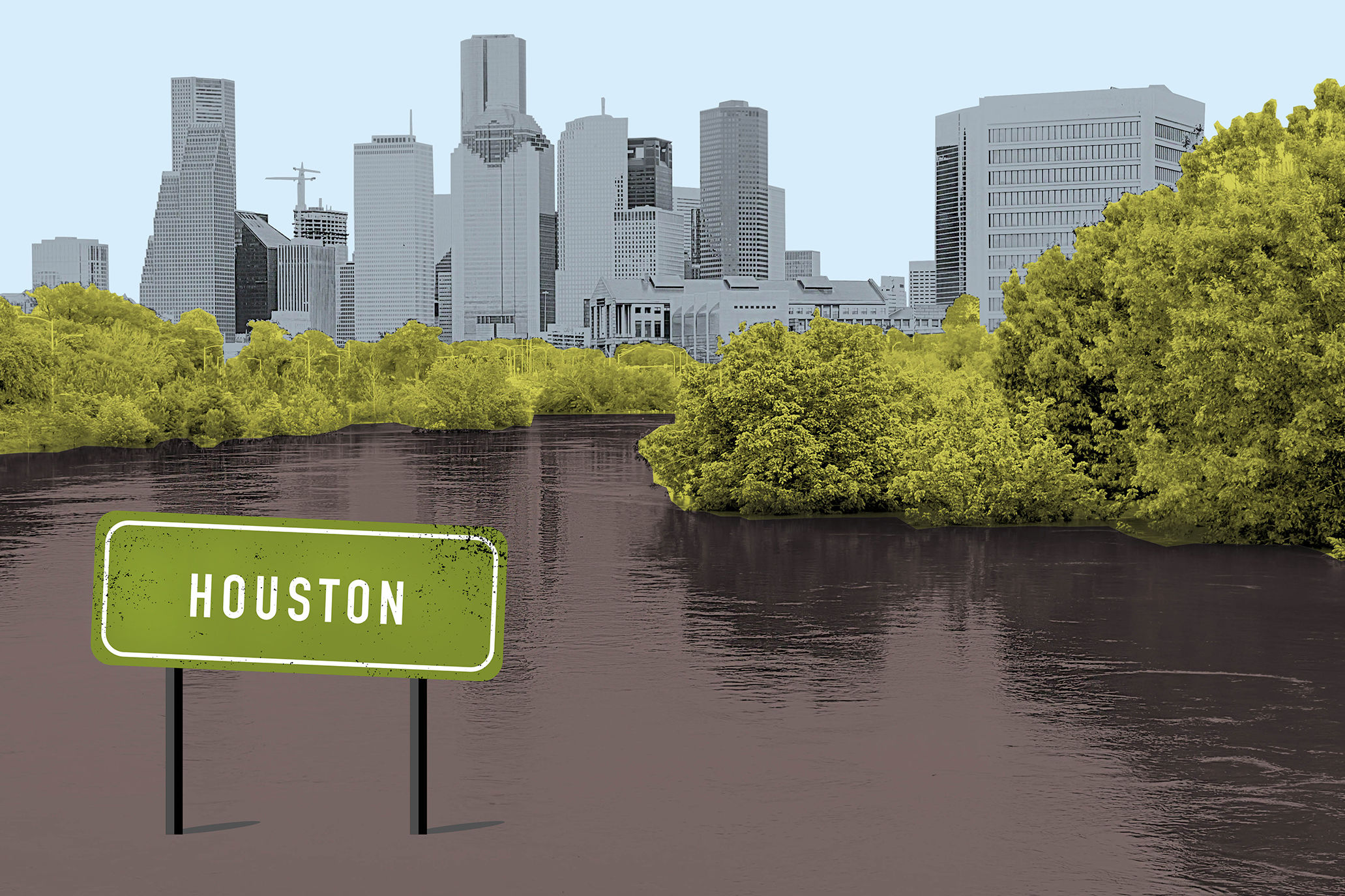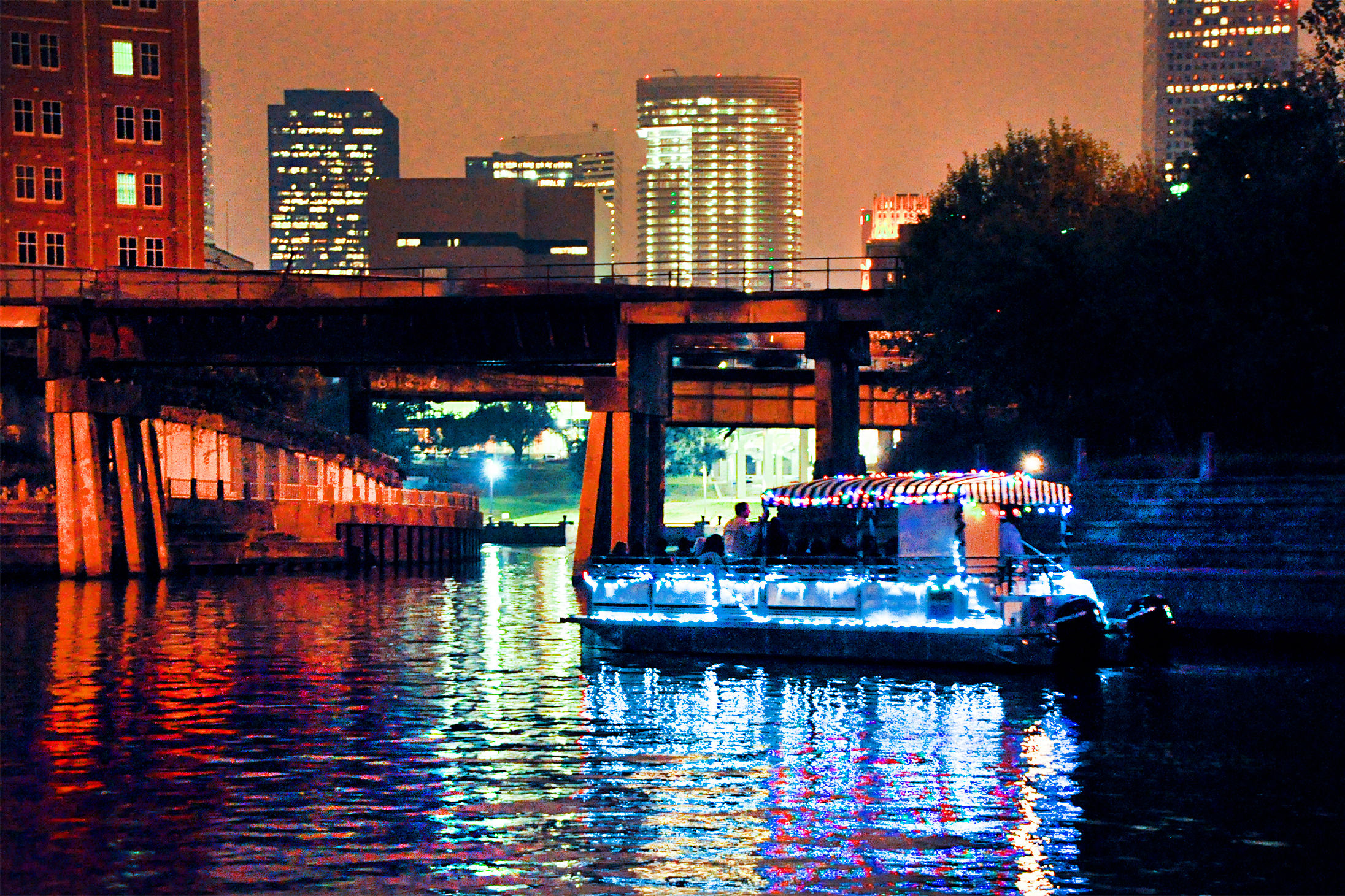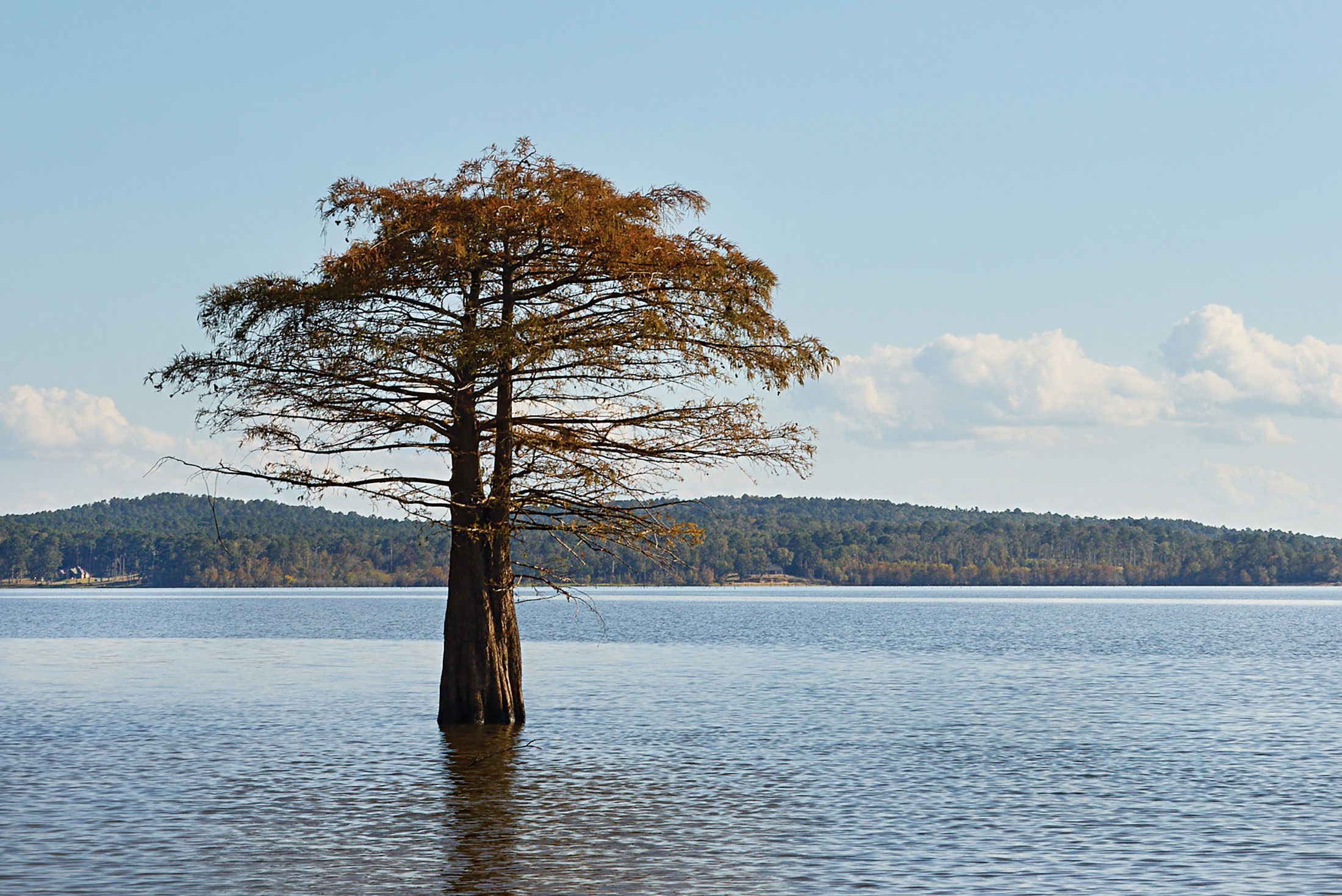How Industrial Relics Will Get a New Life in Buffalo Bayou Partnership’s East Sector
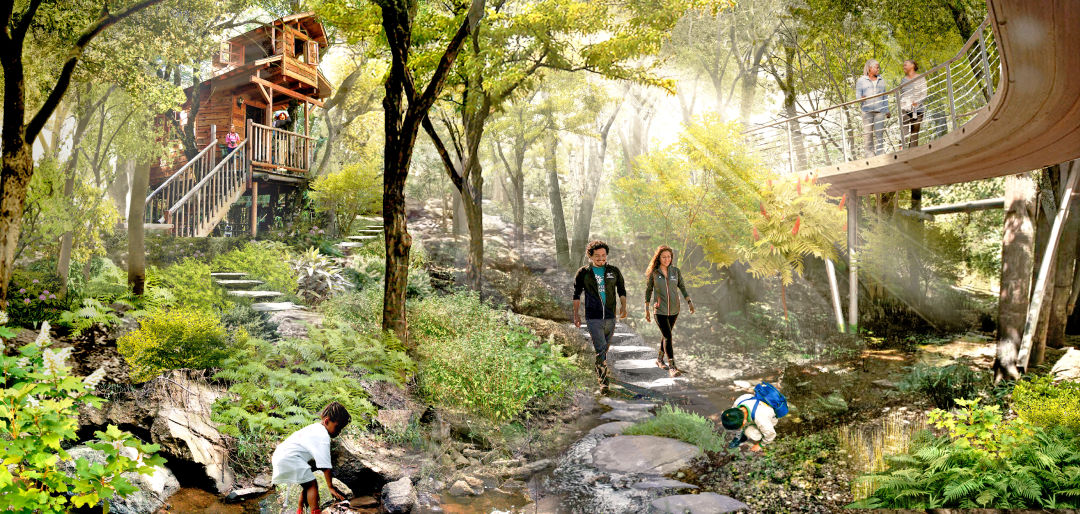
Japhet Creek.
Houston’s East Side is about to undergo an industrial revolution—just one that's going to yield more green space, not less. For more than a decade the Buffalo Bayou Partnership (BBP) has quietly purchased properties along the waterway for its next big project, the East Sector, an enormous undertaking that stands to alter the East Side of Houston the way Buffalo Bayou Park’s 160-acre expanse previously changed Downtown.
The end result of this intricately detailed, multimillion-dollar undertaking, once completed, will bring 40 miles of hike and bike trails, 200 acres of new and refreshed park space, seven boat launches, and seven new pedestrian bridges from US 59 to the Port of Houston Turning Basin over the next 20 to 30 years. With the master plan for the nonprofit’s next big showpiece complete and fundraising underway, Houstonia recently asked BBP President Anne Olson what part of the East Sector she’s most excited about. She didn’t even hesitate: The Industrial District is where it’s at, she explained. “We have some really cool industrial infrastructure projects.”
That’s something of an understatement. The bulk of these projects are located in the Industrial District and Central Hub, two of four sections in the mapped-out East Sector master plan, which also includes a Downtown Gateway to the west and an Eastern Terminus by the port. “Most people have no idea where this is,” says Olson. “So we say, ‘Do you know where Ninfa’s is? On Navigation Boulevard? That’s where this is.’”
Historically, the neighborhoods here—the greater East End to the south and Fifth Ward to the north, both low-income, minority-dominated areas—were separated from the ribbon of Buffalo Bayou that ran between them, and from each other, by factories, wastewater plants, and petrochemical plants that lined the banks. Even after that activity moved further east toward the Houston Ship Channel, warehouses sat vacant on the edge of some of the most beautiful sections of the bayou, doing nothing but preventing area residents from accessing the waterway.
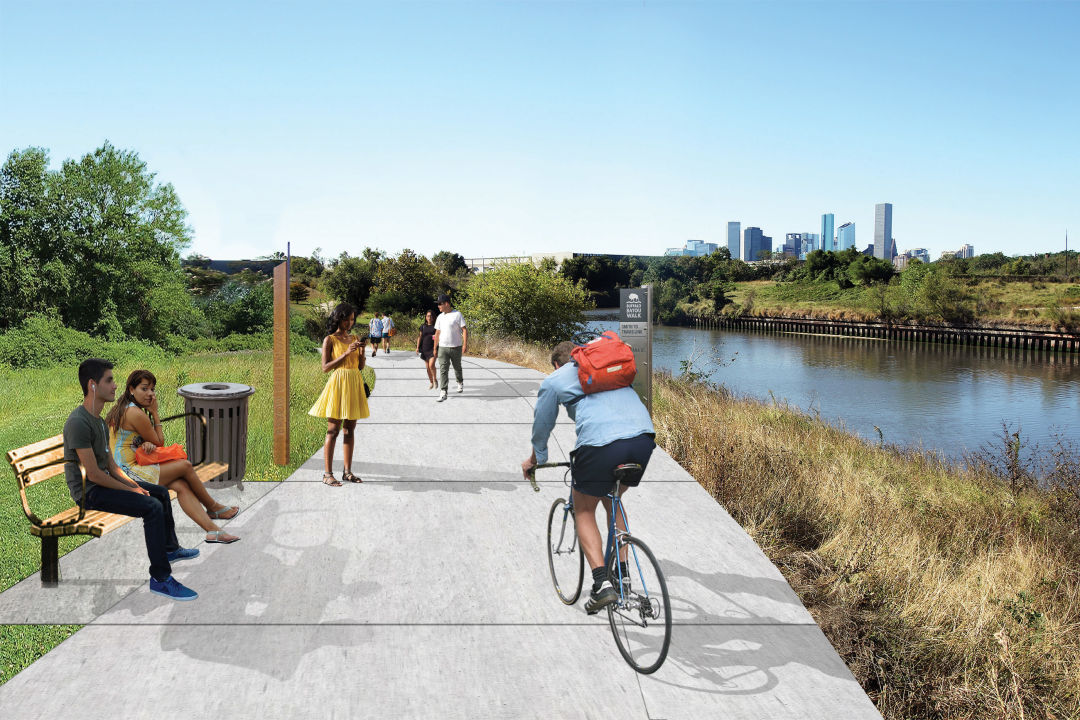
A Bayou trail.
Now owned by the BBP, in the decades ahead—“Buffalo Bayou Park took 15 years to make,” Olson reminds us, “these plans take a long time”—these mechanized relics, and the land they stand on, are going to be transformed into places that are intimately connected to the neighborhoods that abut them. The goal is to use what’s been left behind to make the Industrial District spot rival Gas Works Park in Seattle and Concrete Plant Park in the Bronx.
Thankfully, the partnership is already somewhat familiar with the process of revamping artifacts of the past—the renovated, circa-1926 Cistern has been welcoming tens of thousands of visitors annually since opening in 2016—and relying on public-private collaborations to help operate its sites. (The East Sector, which won’t be a linear park but more of a collective of greenspaces, will require the city, county, port, and more partners to come aboard to operate it.) The BBP is also being careful to consider how the project could impact the authenticity of adjacent neighborhoods.
“The public spaces and the trails will reflect the cultural and industrial legacy of this part of town,” says Olson, and she is intent on ensuring that what makes these communities unique will not be lost in the process.
Mayor Sylvester Turner, for one, was impressed when he arrived to speak at the East Sector’s launch party last October. As locals celebrated amid neighborhood food trucks and a trio of local restaurants offering catering atop a weathered wharf at the forthcoming event space, Turkey Bend, Olson overheard him. “He told somebody, 'This is really cool.'”
We can’t help but agree. These are the industrial relics we’re banking on.
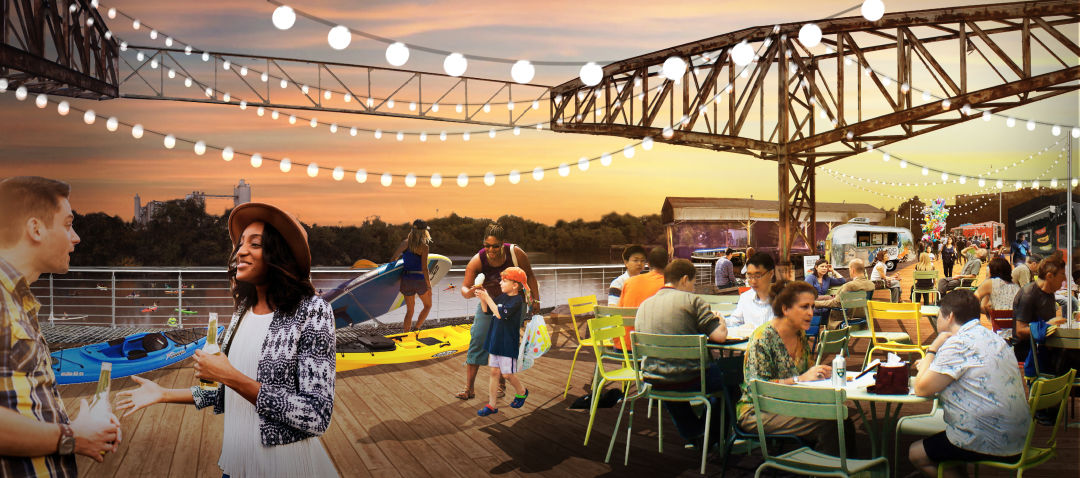
Event space at Turkey Bend.
Event Shed at Turkey Bend
Though this compound, which the partnership acquired for $2.3 million in 2018, has just a single name, it’ll have several standout features. The main building, a 50,000-square-foot warehouse on Navigation, will have an outdoor plaza for events along the street, and inside there’s room for multifaceted community art and event spaces and perhaps even an incubator to foster local businesses. The warehouse’s coolest feature—a winding tunnel that descends to the unknown in the middle of the room—connects the building to the bayou banks, where there’s another open-air warehouse and a wharf with a rusted crane hanging over the water. “We want to leave it pretty gritty: leave the open-air pavilion, and have it as an event space during the day,” says Olson.
Expect this to be a boat rental hot spot, too, since this is a particularly placid bend in the bayou, safely cut off from the more raucous waters in the nearby Houston Ship Channel. The compound also rocks some eye-snagging graffiti (including a Mars Attacks! alien) that hopefully will remain when the site, which doesn't have a firm date yet, opens, likely sooner than later.
Lockwood Water Treatment Gardens
“At one point it was all sewage treatment,” Olson says of this 22-acre site, vacant for decades and owned by BBP since 2012, which is still bedecked with large aeration tanks and locomotive-size pipes. The plan is to ultimately reconstruct the leftover works of the sewage plant into an elaborate setup composed of lake-like stormwater basins, botanical displays, and water gardens.
“It won’t be a botanic garden,” says Olson. “But we’ll grow native plants and leave the aeration tanks and infrastructure in place.”
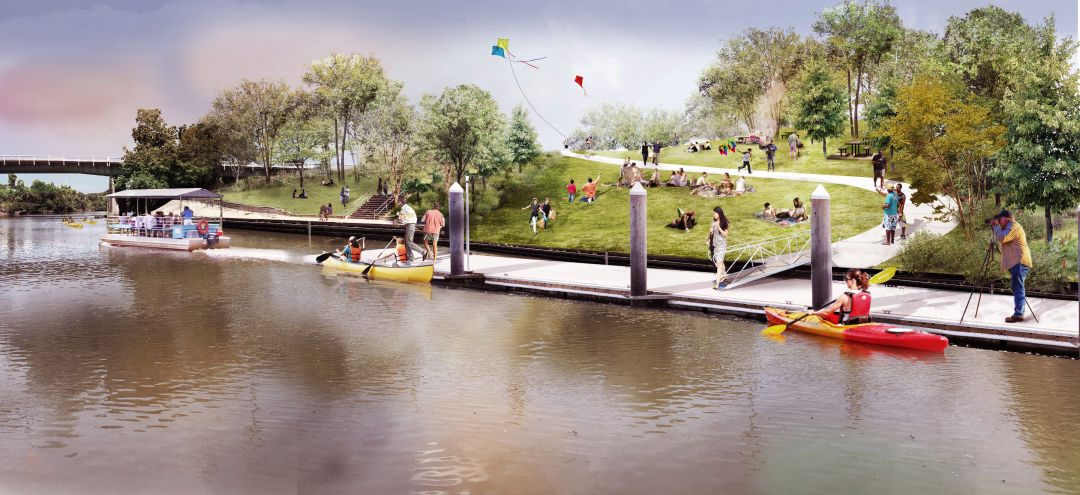
Guadalupe Plaza Park.
Image: Buffalo Bayou Partnership
The site will also have a visitor center, event space, and café, plus a dock where people can rent a kayak or catch a water taxi downtown, with stops along the way at Tony Marron Park and Guadalupe Plaza Park. But since it won’t come online until the East Sector’s later phases, this section is still in the planning stage.
Lockwood Adventure Park
Across the street from the water gardens, there now sits an empty lot that was once also part of a city-owned sewage treatment facility. Eventually this spot will be transformed into an extreme sports park with training hills inspired by the gravel and sand mounds that companies left in piles all over this area, along with an obstacle-and-ropes course. Two existing concrete buildings from the property’s former life will house a ticketing office and picnic pavilion.
“We heard a lot from some of the younger people who came to the community meetings: how little there is for young adults between the ages of 12 and 14,” says Olson, so there could be skateboard and BMX elements, too.
Lockwood South
Through a partnership with a Chicago-based affordable housing developer, this 18-acre mixed-income neighborhood project on the edge of the Central Hub and the Industrial District, which doesn’t have a firm construction date yet, will bring about 350 multi- and single-family units to the south bank of Lockwood Drive. The BBP is going after federal tax credits and even some local Harvey relief funding for the project, and Olson says they’re hoping the property will help bring in revenue for park operations while also offering some affordable housing in an area that will likely become an even more desirable spot as these projects are completed in the coming years. “At community meetings we heard about the need for affordable housing, so that’s one of the reasons why we’re doing it,” Olson explains.
Looking at the impact of projects like the High Line in New York, which sees 60,000 visitors per day, drawn by the sheer cluster of stores and other attractions that sprang up around it, also made the BBP officials determined to include affordable housing in the East Sector, says Olson. “They never anticipated the amount of development it would spur,” she says. While people of more modest means may not be able to afford a place in East River, the 146-acre, mixed-use development in the works nearby that Midway Holdings (of City CENTRE fame) will roll out in five phases over the next decade, Olson is intent that people of all income levels will be able to get an apartment in Lockwood South. “Equity is a big issue for us,” she says.
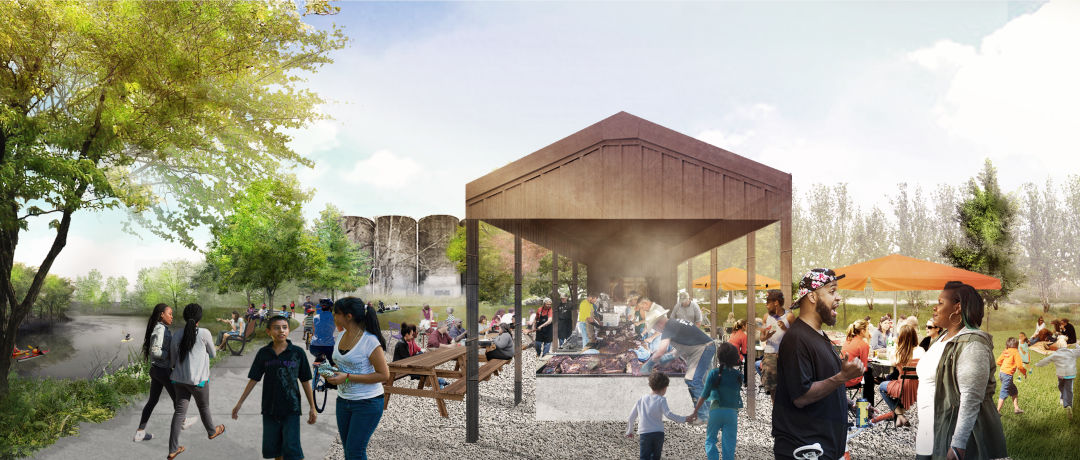
Gravel Silos with a barbecue area.
Gravel Silos
Although technically outside the “industrial zone” on the park map, the gravel silos have a similar vibe to the other projects, and have already hosted an array of public art since opening in 2010 with a video projection installation from the Aurora Picture Show. You can expect more of the same in years ahead—with an added bonus or two. “We own the property adjacent to it,” Olson says. “And in the plan, we have the idea of a barbecue area there.”
The site will also join up to the Cistern in Downtown via the Bayou Trail—and to all the other East Side relics, too. Says Olson, “My vision has always been to connect them somehow.”
